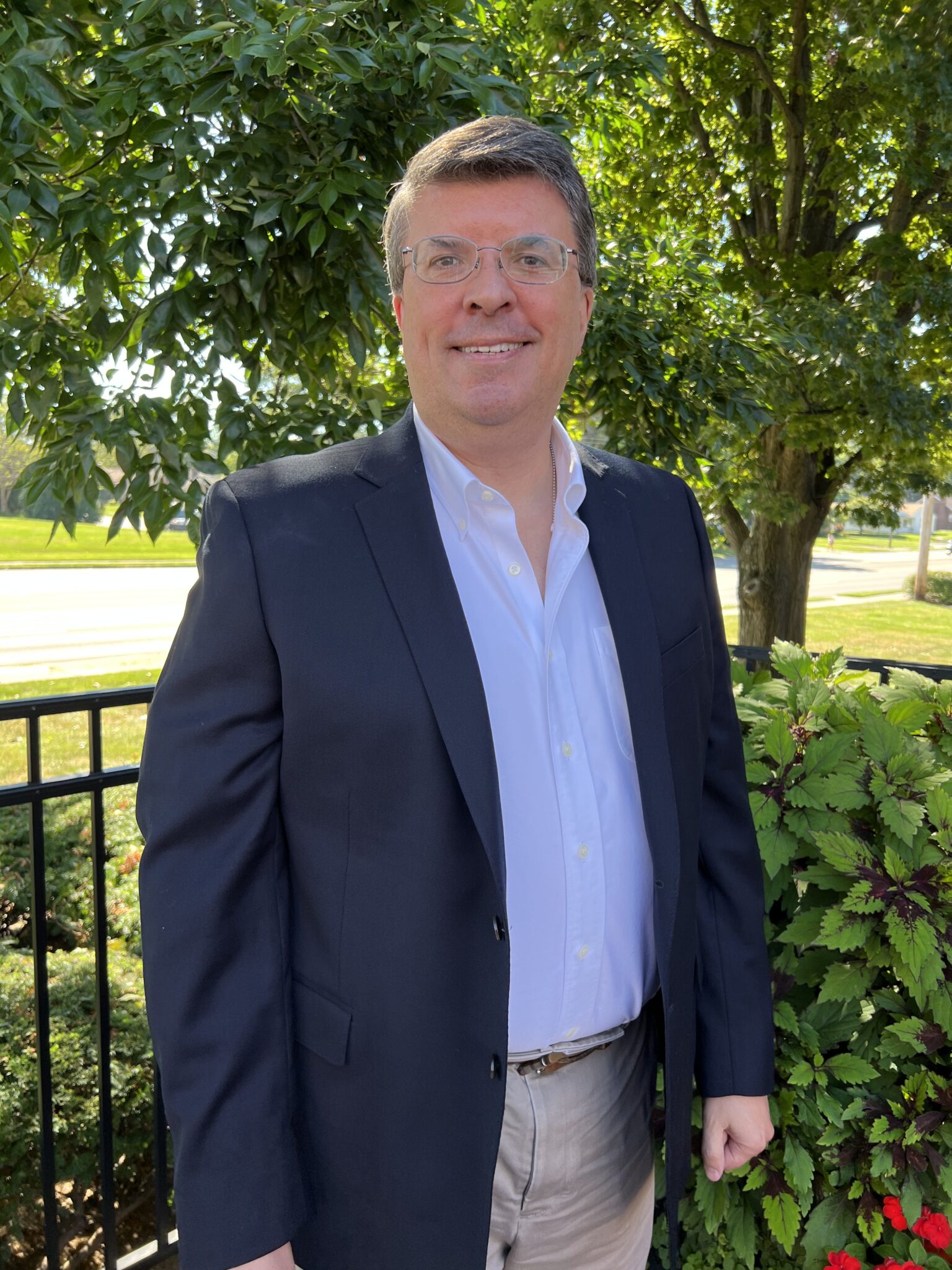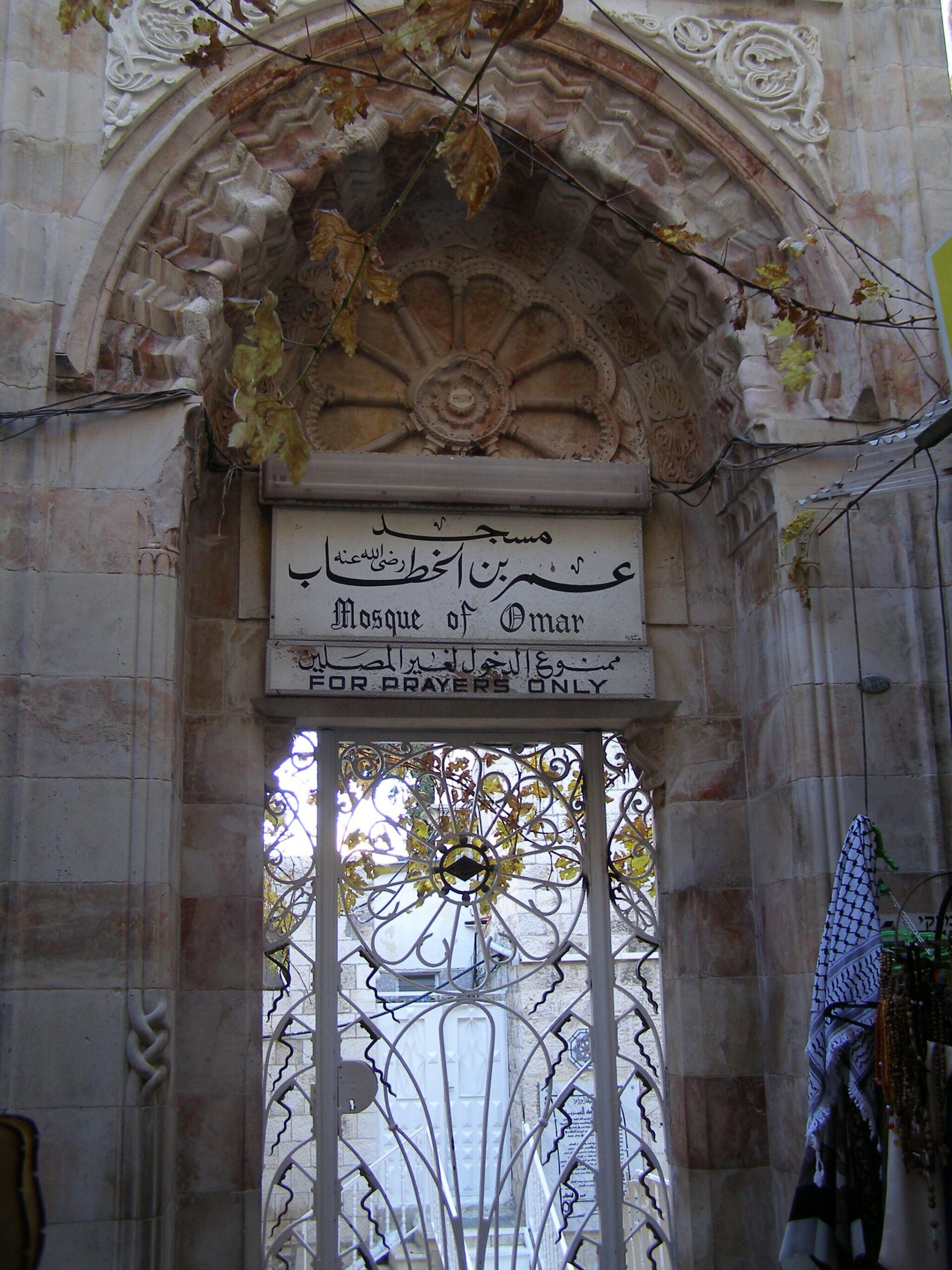It comes as a surprise to most Christian pilgrims to the Holy Land to discover standing immediately adjacent to the Church of the Holy Sepulcher in Jerusalem, the holiest place for Christians containing both the traditional locations of Jesus’ death and resurrection, the Islamic Mosque of Caliph Umar. One generally does not expect to find a mosque in the courtyard of a church or vice versa. But the long, complicated story of Jerusalem produces more than a few incongruous neighbors.
In 637, an Islamic army swept out of Arabia led by the second Caliph, Umar Ibn al Khattab. The city of Jerusalem, now without its Roman garrison, faced a dire situation. They could resist and be destroyed; indeed, everybody expected a bloodbath. Or, they could talk. The Christian Patriarch Sophronius negotiated the protection of the Christian’s civil and religious rights in exchange for the payment of tribute. No homes would be destroyed, no churches would be plundered, and no lives would be taken. The Caliph entered the city not so much as a conqueror but rather as new management.*
To celebrate their mutual cooperation, Sophronius invited Umar into the Church of the Holy Sepulcher to pray together. The Caliph politely but firmly declined. He explained to the Patriarch that while he appreciated the hospitality, it would be a very bad idea. If he were to enter the church and pray, the Caliph clarified, some of his followers would someday turn the whole building into a mosque. So, the Caliph and the Patriarch knelt down together out on the bare pavement in the courtyard under the open air. And just as Umar predicted, a mosque was built over the spot of their shared worship.
As a curious dilettante of late antiquity, I know that early Muslims and Christians were not singing Kumbaya together. But they did manage to live alongside each other in relative peace and harmony for the next four hundred years. They did manage to work with their Jewish brothers and sisters to clear the Temple Mount and helped build the Dome of the Rock (with its admittedly supersessionist messages towards both Jews and Christians). They did not create an ideal society of angels, but in an age when my Northern European ancestors were still enthusiastically practicing human sacrifice, they created a community of relative tolerance, creativity, and peace. It was the unfortunate unsettling of this delicate equilibrium by invading Turks some 450 years later that would set the crusades in motion.
I study history to nurture a sense of incarnate as opposed to idealized hope. Human nature does not appear to change very much. We are all alike in the ways we can be appalling to each other. But despite that tendency or pervasive flaw, there are times and places where creativity, compassion, and connection seem to happen. If the people of the past could overcome the worst of our natures, then so can I, and so can we. So, I imagine a world where political and religious leaders are so considerate of one another that they seek ways to honor each other’s traditions. It can happen because it did happen.
It is easy to despair. Our doom-scrolling media readily confirms our gloom. But if you look back carefully, our story is not merely one awful thing after another. People can learn. People can surprise. And of all the places on Earth, Jerusalem, and its story seems to have more than its share of surprises, stones that listen and speak, and dead men who get up and walk.
I believe in miracles, not in the sense that I depend upon them happening. I believe in miracles because they are signs that point me toward the truth. And in that truth, we, too, in our present generation, are invited to participate.
*A truly nerdy endnote—With two short exceptions, the city of Jerusalem would remain under Islamic control for the next 1300 years until the surrender of the city by the Ottoman Empire to Great Britain in 1917 during World War One. The final flag of surrender that marked the formal end of thirteen centuries of Muslim control can be seen today in the Darke County Historical Society Museum in Greenville, Ohio.

The Rev. Dr. Brian Maguire serves as the Senior Pastor of Fairmont Presbyterian Church in Dayton, Ohio, and also as an adjunct instructor at United Theological Seminary in Dayton. As a recovering corporate attorney, Brian also cleans up assorted ecclesial messes for denominations. Over the past decade, Brian has co-led thirteen Holy Land trips with CLAL seeking to nurture a love of the Holy Land, deeper sensitivity to religious and cultural complexity, and a greater connection to both place and past for Christian clergy. Brian’s work in both Christian theology and inter-faith understanding is grounded on his Reformed belief that God has one plan for humanity called Covenant into which all are either born or invited to participate. In addition to theology degrees from Princeton Theological Seminary and Duke University Divinity School, Brian is a graduate of The Living School focused on the practices of the Christian contemplative tradition. Brian’s ongoing research interests focus on the divergence of understandings of salvation in Late Antiquity both between and within Abrahamic faiths.

